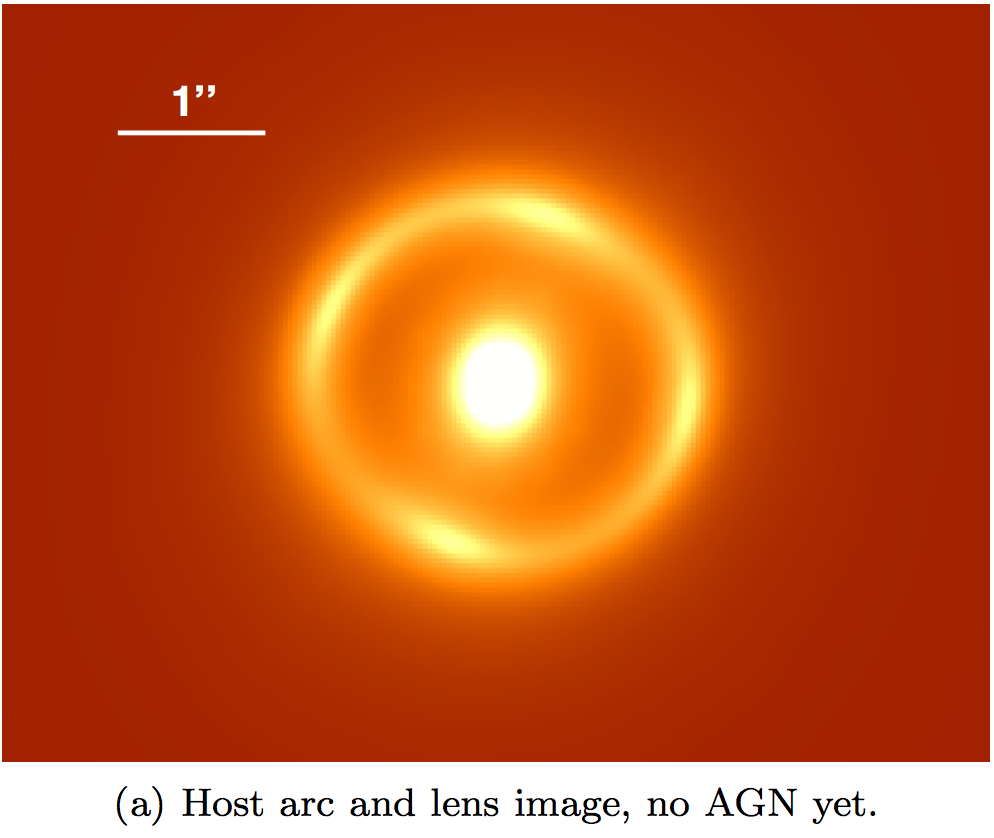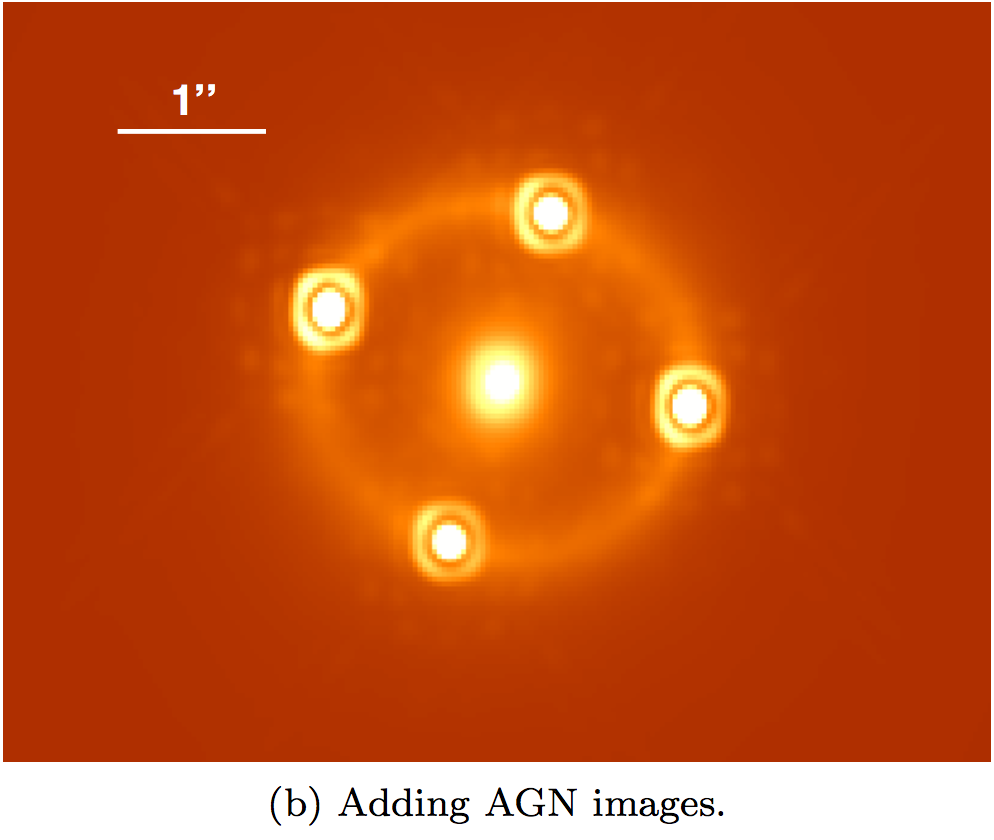H0LiCOW VI. Testing the fidelity of lensed quasar host galaxy reconstruction.
The empirical correlation between the mass of a super-massive black hole (MBH) and its
host galaxy properties is widely considered to be evidence of their co-evolution. A powerful way to test
the co-evolution scenario and learn about the feedback processes linking galaxies and nuclear activity
is to measure these correlations as a function of redshift. Unfortunately, currently MBH can only be
estimated in active galaxies at cosmological distances. At these distances, bright active galactic
nuclei (AGN) can outshine the host galaxy, making it extremely difficult to measure the host’s
luminosity.
Strongly lensed AGNs provide in principle a great opportunity to improve the sensitivity and accuracy of
the host galaxy luminosity measurements as the host galaxy is magnified and more easily separated from
the point source, provided the lens model is sufficiently accurate. In order to measure the MBH−L
correlation with strong lensing, it is necessary to ensure that the lens modelling is accurate, and that
the host galaxy luminosity can be recovered to at least a precision and accuracy better than that of the
typical MBH measurement.
We carry out extensive and realistic simulations of deep Hubble Space Telescope observations of lensed
AGNs obtained by our collaboration.Following is the illustration of the simulation process using a
linear color scale:






Following is our simulations for each lens, the left panel shows the observed image and the middle panel shows the simulation with the same stretch. For clarity, we also show in the right panels the simulated arc image without the bright AGN and deflector, using a different stretch.


After modelling the simulated lenses and analyzing the reconstructed images, we studied the magnitude bias across the sample as a function of host arc magnitude in image plane and as a function of contrast between the AGN:


In this work, we show that the host galaxy luminosity can be recovered with better accuracy and precision than the typical uncertainty on MBH(∼ 0.5 dex) for hosts as faint as 2−4 magnitudes dimmer than the AGN itself. Our simulations will be used to estimate bias and uncertainties on the actual measurements to be presented in a future paper.